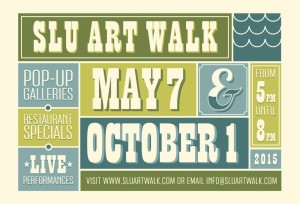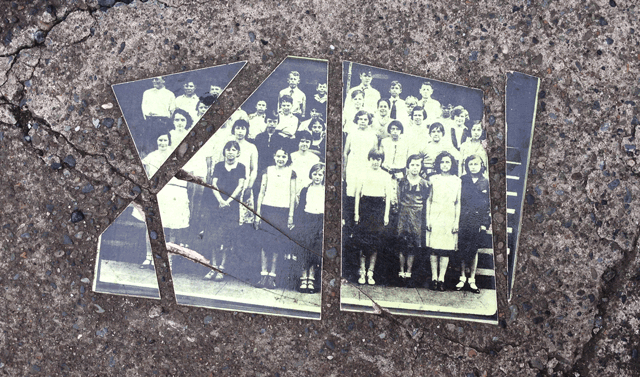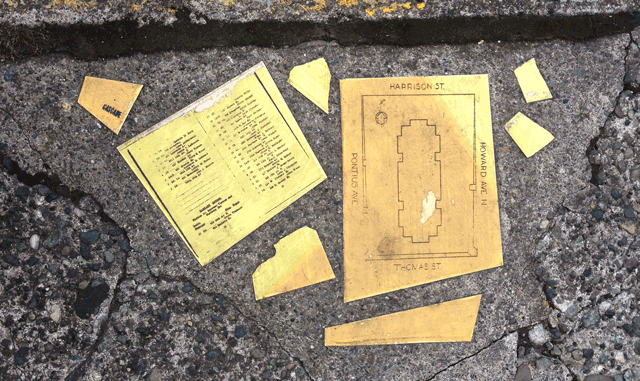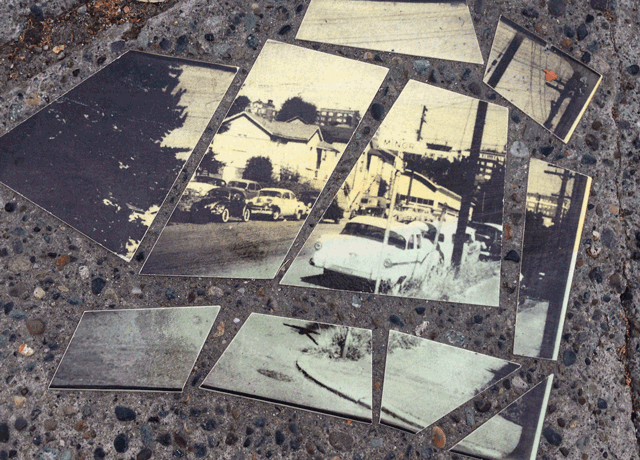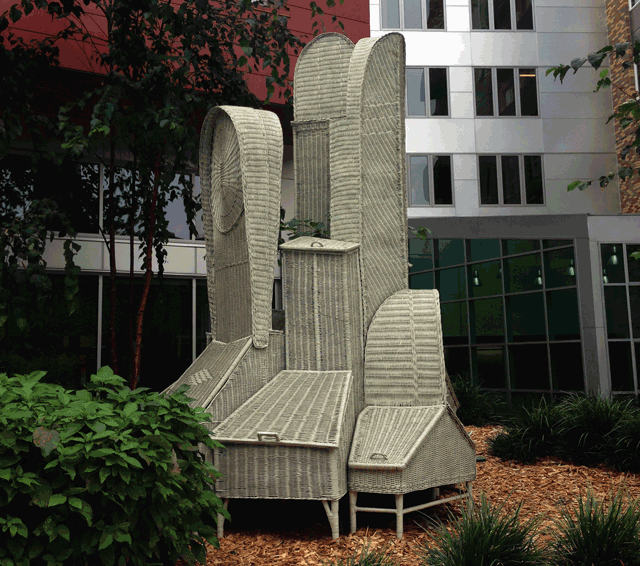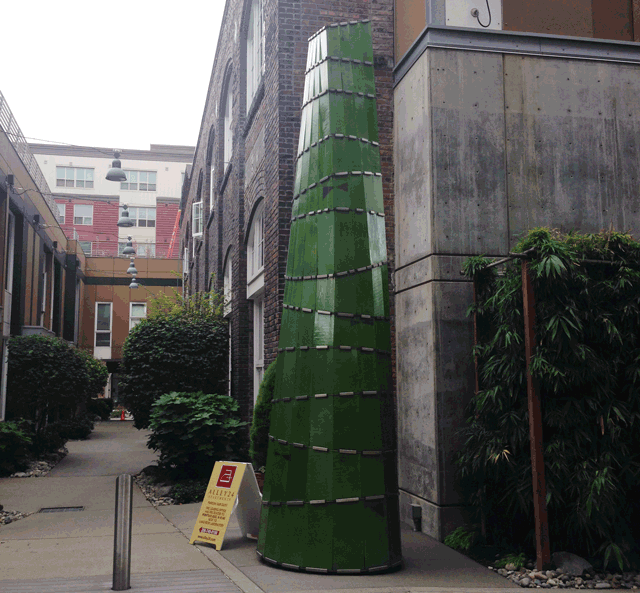By Aaron Swain
Senior Associate, Aaron Swain was project manager during design of Solis, Weber Thompson’s Certified Passive House project in Seattle’s Capitol Hill neighborhood. He is currently the Senior Project Architect on 616 Battery, a 45-story high rise in the Denny Triangle neighborhood.
Did you know that last Thursday was the SLU ArtWalk? Perhaps you participated, and if so, you’ll know that it was an awesome success! I’ll admit that I barely knew it existed as an event, but had agreed to lead a Seattle Architecture Foundation mini-tour of the neighborhood held in conjunction with the event. The tour was loosely focused on public art in the neighborhood, as well as the surrounding building context.
Starting at the Cascade People’s Center in Cascade Park, my group of about 16 people ventured out past Elizabeth Conner’s “Small Monuments” (2002), a series of broken images recessed into the sidewalk pavement; a subtle reminder of memory, what the site once was, and the promise of the future the neighborhood once embodied. The artist’s humble approach toward functionality and social values rings strong and pertinent in today’s rapidly-changing SLU neighborhoods (what used to be a school was then a warehouse, now slated for a residential apartment complex).
Continuing on to the LEED Platinum Stackhouse Apartments, we explored what contemporary property owners expected of their investment, and how the public/private partnership with the city expanded beyond the project itself. Environmental considerations – including the “Swale on Yale” – as well as the socio-historic importance of a laundry, contributed to the final result of visually relevant cisterns, preservation of the historic Supply Laundry building, and finally, “Laundry Strike,” a bronze art piece resembling wicker laundry baskets, paying homage to the 1917 women’s led strike of poor work conditions in the laundry factories that supplied the hospitality and residential functions of the city. (A lot to absorb in 10 minutes!)
Lastly, we proceeded south to take in the REI Flagship Store and its Urban Forest (nearly 20-years old now), as well as Alley 24, an early example of mixed-use development and historic preservation (specifically, Richmond Laundry) in a neighborhood that still hadn’t realized its potential as an expansion point for the commercial center. In 1995 – when the Commons Plan had failed – real estate was cheap, but the risk was high: these two projects moved forward as beacons of both. The potential of the neighborhood, and the development style that would come to embody it are evident — a focus on environmental awareness and regeneration, a demand for mixed-use occupation with respect to the existing street fabric and market potential, and a strong value for livable communities, where walking is a major mode of transportation to get to the places you need to go (work, shopping, home).
As if the architectural-economic accomplishments weren’t enough, the developer wanted to bridge one more gap: the public space (i.e., the alley, for which the project claims its name) dividing a private development. A holistic approach was taken, adding catenary lighting, greenery and landscape, even unit entries to humanly activate a previously service-oriented corridor reserved for trash pick-up and deliveries – something we are seeing as common place in the neighborhood today. An art piece was commissioned at the crossroads of the alley and the pedestrian corridor (a.k.a., through-block connector): “Balleuse”, by James Harrison. Although seemingly simple and non-descript, this piece has been a beacon of identity, emphasizing the importance of this crossroads, providing a venue for personalization (often decorated by tenants and other community members).
The tour concluded here, at this crossroads between commercial and residential uses, where service meets amenity, and art reinforces the architectural goal. It is a strong reminder of the multi-faceted complexity of design, where historical, economical, societal, and artistic realms merge to inspire the current development trends of a neighborhood, city, and perhaps even, a nation.
In addition to Aaron’s SAF tour, Weber Thompson participated in the SLU Art Walk as a sponsor. We enjoy supporting causes that encourage dialogue about art, design, the built environment and the sustainable growth of the city we call home.

